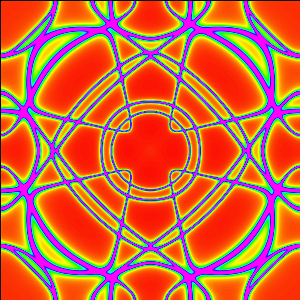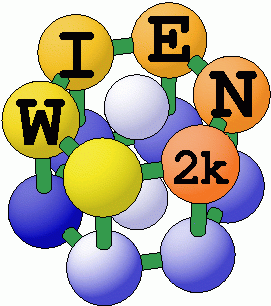Software
SasView
SasView is a Small Angle Scattering (SAS) analysis package for the analysis of 1D and 2D scattering data directly in inverse space. The focus was originally on neutron data (SANS) but has been used for X-ray’s as well and includes a tool for determining a slit resolution for the SAXSess instrument. SansView also includes PrView to invert SAS data to P(r), a resolution calculator, and a scattering length density calculator among others tools. A simple plugin mechanism is available for users to add custom models.

Savu
Savu is a Python package to assist with the processing and reconstruction of parallel-beam tomography data. The project originated in the Data Analysis Group at the Diamond Light Source (UK synchrotron) to address the growing, and increasingly complex, needs of the tomography community. Designed to allow greater flexibility in tomography data processing, Savu is capable of processing N-dimensional full-field tomography and mapping tomography data, along with concurrent processing of multiple datasets such as those collected as part of a multi-modal setup. Savu process lists, tailored to a specific experiment and passed to the framework at runtime along with the data, detail the processing steps that are required. A Savu process list is created using the Savu configurator tool, which stacks together plugins chosen from a repository. Each plugin performs a specific independent task, such as correction, filtering, reconstruction. For a list of available plugins see plugin API. Savu is currently in use across the tomography beamlines at Diamond to reconstruct both full-field tomography data and multi-modal, mapping tomography data.
SAXSutilities
Matlab based graphical user interfaces for the online processing and analysis of Small Angle X-ray Scattering data. In particular: -online treatment and fitting of SAXS data -averaging, background subtraction, normalization of ASCII data, etc. -processing of 2D SAXS images -averaging, subtraction, etc. of EDF images
SHARP/autoSHARP
SHARP is a computer program for macromolecular crystallography. It operates on reduced, merged and scaled data from SIR(AS), MIR(AS) and MAD experiments, refines the heavy-atom model, helps detect minor or disordered sites using likelihood-based residual maps, and calculates phase probability distributions for all reflections in the data set. autoSHARP is an automated structure solution system - from merged data to automatic model building (uses SHARP as phasing engine).

SHELX
SHELX is a set of programs for the determination of small (SM) and macromolecular (MM) crystal structures by single crystal X-ray and neutron diffraction. In the program suite: SHELXT extracts the Laue group, cell dimensions and types of element present , solves the structure using data expanded to space group P1, and then uses the P1 phases to find the space group. SHELXS solves small (up to about 100 unique non-hydrogen atom) structures by direct methods. it is based on the classical tangent formula of Karle and Hauptman, but uses phase annealing and includes information from the weak reflections via the negative quartets. etc. etc,-> refer to the SHELX home page

silx
The silx project aims at providing a collection of Python packages to support the development of data assessment, reduction and analysis applications at synchrotron radiation facilities. The purpose is to deliver reading/writing of different file formats, data reduction routines and a set of Qt widgets to browse and visualize data.
simex_platform
simex_platform is a python library to facilitate setup, execution, and analysis of simulations of experiments at advanced laser light sources. As an example, consider a molecule radiated by highly brilliant, ultrashort x-ray pulses such as delivered by an X-Ray Free Electron Laser (X-FEL). The simulation platform allows to combine tools and codes for the simulation of each step of the experiment: Generation of radiation in the photon source, propagation through optics and waveguides to the interaction point, photon-matter interaction, scattering of the radiation into the far field and detection of the latter. The platform provides slots and interfaces for the various simulation steps.

SPR-KKR
The SPRKKR band structure package allows to calculate the electronic structure of arbitrary 3-D periodic systems, including systems with chemical disorder. The treatment of 2-D periodic systems (e.g. surfaces) can be done at the moment only by using an auxiliary system having three dimensional periodicity or by making use of the cluster approximation. The electronic structure calculation can be done in a non-relativistic, scalar-relativistic as well as fully relativistic mode. In the scalar-relativistic mode paramagnetic as well as spin-polarized systems can be treated, including non-collinear spin structures and arbitrary spin spirals. In the fully relativistic mode, paramagnetic as well as spin-polarized systems with an arbitrary spin configuration can be dealt with. On the basis of the electronic structure calculation, many different properties can be investigated with a strong emphasize on response functions and spectroscopic properties.
Steca
The stress and texture calculator Steca is an interactive, graphical data reduction program for neutron and x-ray materials diffractometers.

tomogui
Graphical user interface for tomography reconstruction. Handle - FBP (based on silx FBP) - ART transmission and fluorescence (based on freeart)

tomwer
Tomwer is offering tools to automate acquisition and reconstruction processes for Tomography. It contains: - a library to access each acquisition process individually - gui and applications to control main processes (reconstruction, data transfert...) and execute them as a stand alone application. - an orange add-on to help users defining their own workflow (http://orange.biolab.si)

VASP
VASP is an ab initio simulation package based on DFT. It is used for atomic scale materials modelling, e.g. electronic structure calculations and quantum-mechanical molecular dynamics from first principles. VASP computes an approximate solution to the many-body Schrödinger equation, either within density functional theory (DFT), solving the Kohn-Sham equations, or within the Hartree-Fock (HF) approximation, solving the Roothaan equations. Hybrid functionals that mix the Hartree-Fock approach with DFT are implemented as well. Furthermore, Green's functions methods (GW quasiparticles, and ACFDT-RPA) and many-body perturbation theory (2nd-order Møller-Plesset) are available. Central quantities, like the one-electron orbitals, the electronic charge density, and the local potential are expressed in plane wave basis sets. The interactions between the electrons and ions are described using norm-conserving or ultrasoft pseudopotentials, or the projector-augmented-wave method. To determine the electronic ground state, VASP makes use of efficient iterative matrix diagonalisation techniques, like the residual minimisation method with direct inversion of the iterative subspace (RMM-DIIS) or blocked Davidson algorithms. These are coupled to highly efficient Broyden and Pulay density mixing schemes to speed up the self-consistency cycle.

VGStudio MAX
VGStudio MAX is a high-end software for the visualization and analysis of CT data in combination with the optional add-on modules 'Coordinate Measurement', 'Nominal/Actual Comparison', Porosity/Inclusion Analysis', 'Wall Thickness Analysis', 'Fiber Composite Material Analysis' and 'CAD Import (with PMI)',

WIEN2k
The program package WIEN2k allows to perform electronic structure calculations of solids using density functional theory (DFT). It is based on the full-potential (linearized) augmented plane-wave ((L)APW) + local orbitals (lo) method, one among the most accurate schemes for band structure calculations. WIEN2k is an all-electron scheme including relativistic effects.
X-SOCS
The X-ray Strain Orientation Calculation Software (X-SOCS) is a user-friendly program, which has been developed at ID01 for analysis of the spec-file and images recorded during continuous mapping measurements. X-SOCS aims at retrieving strain and tilt maps of nanostructures, films, surfaces or even embedded structures. It offers the opportunity to get preliminary results directly at the beamline giving the user the opportunity to adapt the planning of the experiments and the measurements with respect to this first set of results. This is of particular importance for the application of such fast scanning methods to in operando studies at high temperatures or in gas or liquid environments.

